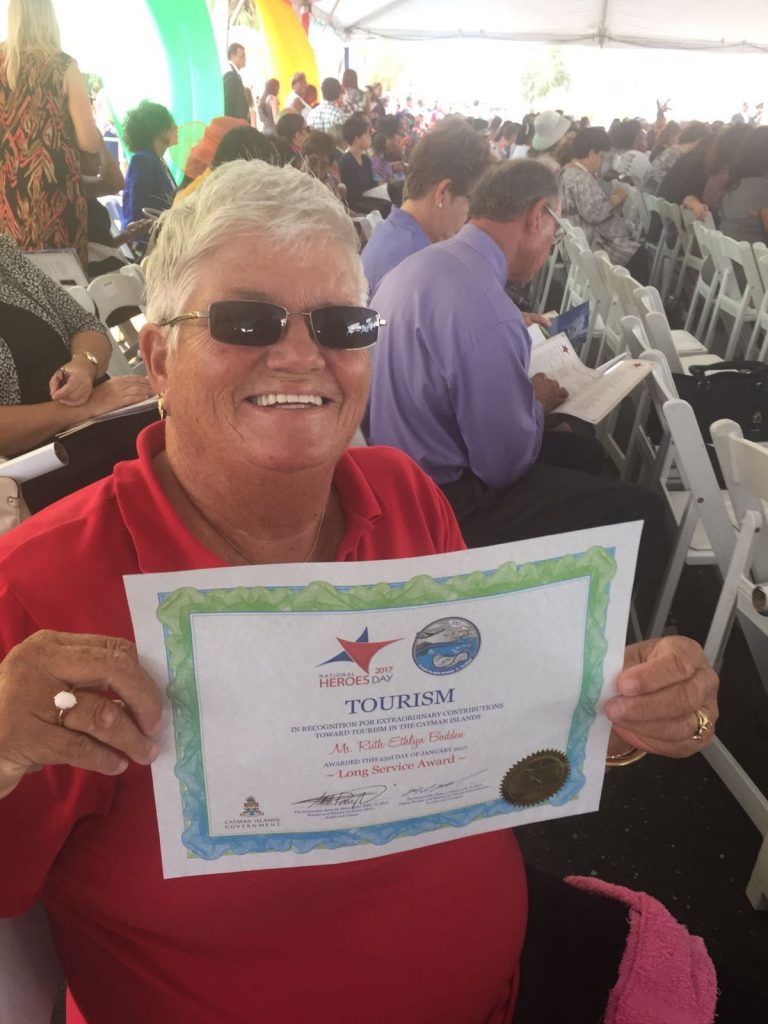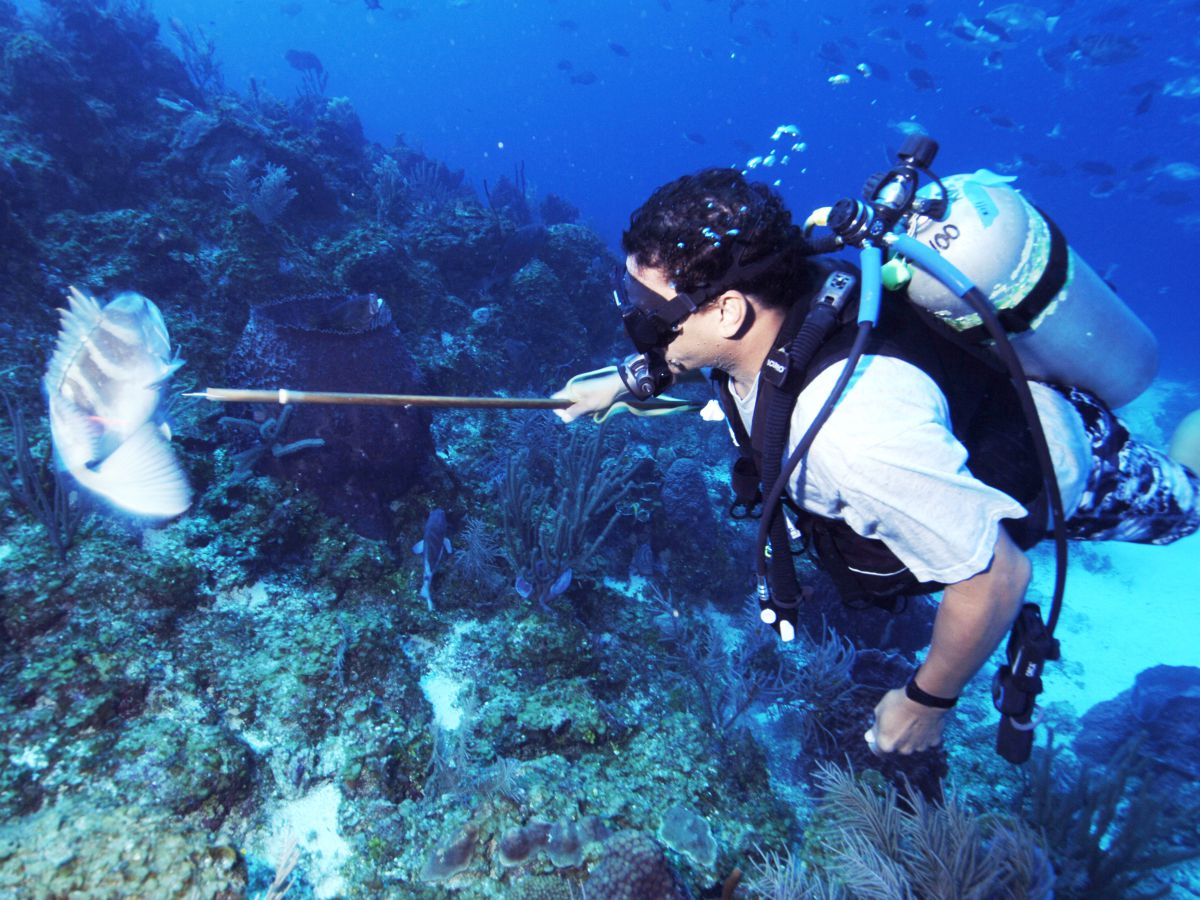(CNS Local Life): Ruth Bodden is a proud ninth-generation Caymanian whose family tree reads like a history book of the islands. A fixture at the Cayman Craft Market, where she sells handmade Caymanite jewellery and souvenirs, she will gladly recount tales of her ancestors, who were among the first settlers here, to the tourists who stop by her stall.
Her father was a seaman, whose work took his family to the US when Bodden was about 11 years old. While the transition was difficult for such a young girl, she says that looking back, “it was the greatest thing that happened”, with her dad travelling all over the States with the family. “He was one of those people that once he settled somewhere he also wanted to educate you,” she said.
After more than 25 years in the US, during which time she graduated from university and worked for an insurance company in California, where she excelled in marketing, she headed back to Cayman in 1990.
She held a job at the now-defunct Beach Club helping guests with chairs, wave runners and the like, then back to insurance at BritCay until 2000. A stint at the TV station followed, before she wound up at the Craft Market in 2005, though she didn’t find her way to Caymanite until about seven years later.
CNS: Tell me about your family history.
Ruth Bodden: My family were the first settlers, the Boddens from Ireland and the Watlers from Scotland. They came to Cayman in the 1600’s. On my dad’s side there is Bodden and Eden, on my mother’s there is Watler and Bodden. William Eden came in the 1800’s; he was my seven times great grandfather. (He built the Great House at Pedro St James). So, I’m two Boddens, an Eden and a Watler, which is basically all three families. I’m very proud of that. My great uncle, Captain Rayal Bodden, built the library, Elmslie Church, the post office and the town hall. My grandfather was Chief Inspector Roddy Watler; he’s on the Heroes Wall.
Daddy (John Theodore Eden Bodden) left at 16 to go to sea in 1926. This is really remarkable. He fought in World War II for the United States. When he came home, he saw my mom walking down the street and he said, “That’s the girl for me.” She was born in 1927, so when he left she wasn’t even born yet. And he went to my grandfather and asked for her hand in marriage; there was a 17-year difference between the two. There are four in my family. I am the oldest and then I have a brother Johnny, Debbie and David, and they are all in the United States.
CNS: You spent some time overseas. Where were you and what did you do while away?
RB: I was in San Francisco. My daddy became the first captain of the first container ships in the world, and the port that was built especially for the containers was in Oakland, California, so we moved there in 1961. Unfortunately, he died in 1964. We were on vacation for my sister Debbie’s birthday, 17 May; he died on the 20 May. On top of the fact he was a captain, he had also passed his pilot’s licence so he could go into any port in the world and direct a ship into the port. They wanted him to pilot a ship through the Panama Canal and bring it up to San Francisco and then he could extend his vacation that many days. He went over to NY, was with his brother, went out to dinner, went back to the hotel and had a massive heart attack. It took seven days for them to bring him to us. I was just going on 14 when he died. But, we stayed, and I eventually went to college on a swimming and running scholarship.
When I graduated I got a really good job at an insurance company that had just gotten the contract to do insurance for the whole state of California. It was the most intriguing and greatest job I’ve ever had really. My boss enabled me to do what I did best with my education, and it turns out I excelled in marketing. I was with them 20 years.
CNS: And you eventually returned to Cayman.
RB: I came back in 1990. I came back because I missed my mom (who had gone home to Cayman before her). We were always close after daddy died. She took care of all the four of us in a place she didn’t know and didn’t have any help.
CNS: You worked at a variety of jobs here. How did you wind up at the Craft Market?
RB: Originally, what got me down to the market was I got a call from Dr Elaine Campbell. I don’t how she knew I was out of work but she did. She had this product made out of a Cayman plant – Desmodium adscendens – and she made it originally in a tea, and it was for any kind of inflammation in the body. She wanted me to sell it at the market. I was good at it, my marketing skills came right back. I told customers about my grandfather. Out behind the house there was a little plant of it. And he used to snip off a couple pieces of it before he’d be on his bicycle going to work and chew it. And that’s what I used to tell people.

CNS: So how did that lead to selling Caymanite?
RB: (By about 2012) things weren’t selling. She decided to stop selling out at the market. In the meantime, though, I had been out there for about six or seven years. There was a girl right next to me selling rings, bracelets, and I used to help her when she had an onslaught of people. She decided she was going to leave when they opened up the farmer’s market (on Huldah Avenue), and so I thought, “Hmm, I could do this.”
CNS: Did you have any artistic background?
RB: I loved the arts and in high school in San Francisco I took some art classes, and one of my main loves was making jewellery. I made a peace ring, a band, the old-fashioned way, where you make it out of wax and then you put it in a kiln and you pour. In this case, it was sterling silver and it comes out black, and you shine it up. And it got put into the de Young Museum in San Francisco, for a year it was on display. I don’t think I was the only one, there were other students on display, too. But I was so proud of that. I wish I still had the ring. And I liked doing that.
So, in 2013 I started creating jewellery. I brought some of it out, little pieces at first, just little pendants. Not anything really elaborate. I said, “Let me take some extra time and see if I can’t make a turtle or a stingray.” Stingrays are easier than turtles, obviously. Unless you get to doing it and then the tail falls off (laughing). You’re shining it up and then it falls off. And then you gotta start again. That’s always a bummer.
CNS: What has been your most memorable experience dealing with tourists?
RB: When they see a piece from afar and they come up to it, and they have to have it. They say, “How do you do that?” And then, over the years, they come back. For example, Bill is from Vancouver, Canada. We’ve become such good friends and I know his family now. He comes down; sometimes we meet for lunch on a Saturday or something. I’ve invited him to church and different things like that. And that’s what I love. It’s the joy of them coming back to me.
CNS: What, if anything, would you do differently, if you could?
RB: Maybe I should have, when I came home, gotten into government as my aunt wanted me to do, but I didn’t. I think if I had, I’d still be working, but not with Caymanite. Or maybe I wouldn’t be working still; maybe I’d be dead from the stress. What I’m doing now, with the help of my Lord, is He’s kept me so calm out there. I’ve met so many wonderful people. I enjoy talking to people, especially about the island and about this stone, that at 70 years old, I think I’m doing the best thing right now.
This is another in a continuing, but not necessarily regular, series focusing on some of the interesting people who call Cayman home.







Where can i buy Dr.Campbell product made from desmodium adscendens for inflammation ?
Loved reading about this woman!
Ruth has been a good friend of mine for over 20 years. She’s a true person, honest as they come, and a very proud Caymanian. She is certainly an ambassador for the Cayman Island Tourism.
Needed more clarity on dates of events but mostly because I can’t believe she’s 70 and I can’t figure out the timeline!
Enjoyed it!
Loved this read